Morning Eye Candy: Pop of Color
Posted in Photography on October 10 2011, by Ann Rafalko
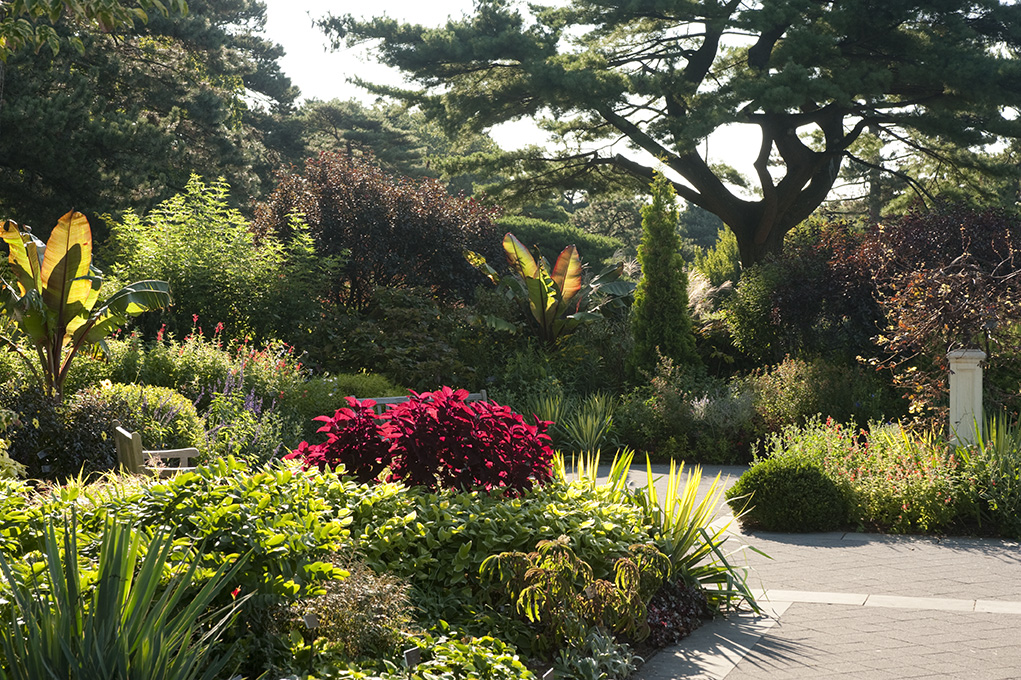 Coleus ‘Big Red Judy’ in the Perennial Garden (photo by Ivo M. Vermeulen)
Coleus ‘Big Red Judy’ in the Perennial Garden (photo by Ivo M. Vermeulen)

Inside The New York Botanical Garden
Posted in Photography on October 10 2011, by Ann Rafalko
 Coleus ‘Big Red Judy’ in the Perennial Garden (photo by Ivo M. Vermeulen)
Coleus ‘Big Red Judy’ in the Perennial Garden (photo by Ivo M. Vermeulen)
Posted in Photography on October 9 2011, by Ann Rafalko
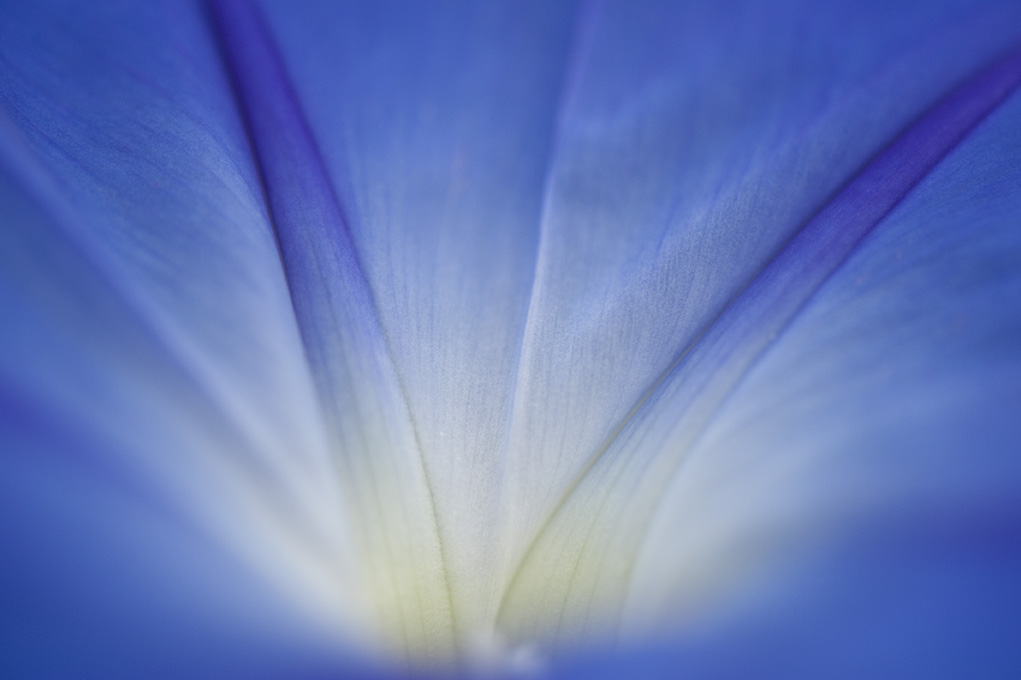
Morning Glory Ipomoea tricolor ‘Heavenly Blue’ (photo by Ivo M. Vermeulen)
Posted in Photography on October 8 2011, by Ann Rafalko
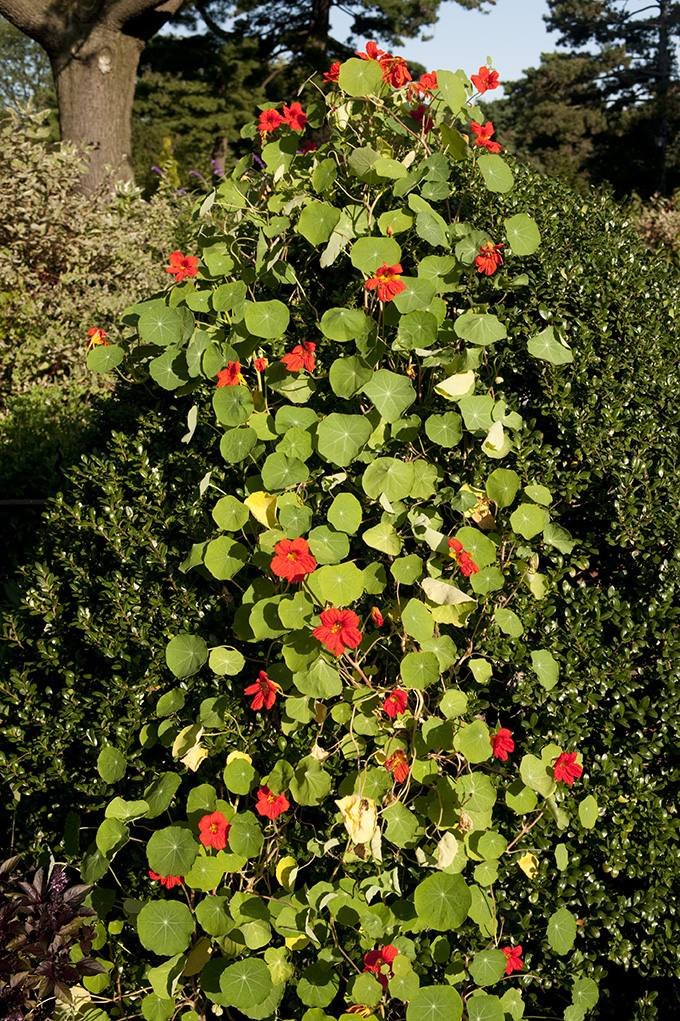
Nasturtiums in the Herb Garden (photo by Ivo M. Vermeulen)
Posted in Gardening Tips on October 7 2011, by Sonia Uyterhoeven
For answers to some of the questions that have been left in the comments see this follow-up post.
Ed. note: Earlier this week I went for a walk in the Conservatory courtyard and spotted a beautiful Mandevilla vine growing vigorously in a container. I tweeted a picture of it, and almost immediately we got a reply from Twitter-user Jacqueline Lewis asking what is the best method for over-wintering this beautiful vine. It seemed like a really good question, so I put it to Gardener for Public Education, Sonia Uyterhoeven. Her answer is below. ~ A.R.
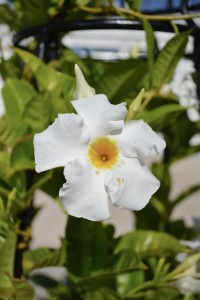 Mandevilla (Mandevilla splendens) is native to Brazil. It has glossy leaves and striking trumpet shaped flowers. It is generally grown as a vine but can also be pruned to maintain a shrub-like upright shape. Mandevilla (Mandevilla x amabilis) is a hybrid that grows to be a large vine reaching 8 to 10 feet tall. They are generally grown on trellis.
Mandevilla (Mandevilla splendens) is native to Brazil. It has glossy leaves and striking trumpet shaped flowers. It is generally grown as a vine but can also be pruned to maintain a shrub-like upright shape. Mandevilla (Mandevilla x amabilis) is a hybrid that grows to be a large vine reaching 8 to 10 feet tall. They are generally grown on trellis.
Both the species and the cultivated variety love light and good drainage. Wait until it starts to dry out before you water. Fertilize your mandevilla every other week with a liquid fertilizer when it is actively growing. Unlike many tropical plants, mandevilla does not like to be pot bound so give it room to grow.
Mandevilla are not hardy in our area, USDA Zone 6, so you have two options if you would like to over-winter your vine. The first option is to bring it into your home. If you have enough space and a bright sunny window then move the container inside once the weather starts to cool down.
Posted in Around the Garden on October 5 2011, by Ann Rafalko
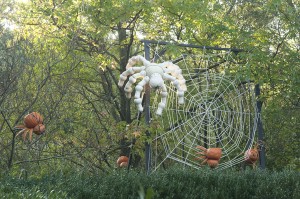 For a lot of people in the New York-area this weekend is a three-day weekend! To celebrate, the Garden will be open Monday, October 10, 10 a.m.-6 p.m. And you know what makes it even better? The weather forecast is looking gorgeous! Such a welcome change after so many grey, rainy, dreary weekends.
For a lot of people in the New York-area this weekend is a three-day weekend! To celebrate, the Garden will be open Monday, October 10, 10 a.m.-6 p.m. And you know what makes it even better? The weather forecast is looking gorgeous! Such a welcome change after so many grey, rainy, dreary weekends.
What is there to do on a beautiful fall weekend at The New York Botanical Garden? So much! There’s kiku and bonsai, leaf peeping in the Forest, the Haunted Pumpkin Garden, walking tours, birdwatching, home gardening demonstrations, music performances, and so much more (don’t forget to stop and smell the roses). The Garden is never the same two days in a row, so come spend a day in one of the world’s greatest urban gardens, The New York Botanical Garden! See the full schedule below, and plan your visit now.
Posted in Exhibitions, Exhibitions, Kiku, Video on October 5 2011, by Rustin Dwyer
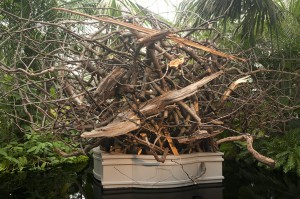 Tropical Storm Irene and her friend Lee certainly left their mark across the northeast. They left a trail of downed trees, broken limbs, and leaves pretty much everywhere. Not only did it give the arborists and horticulturalists here at NYBG plenty of work, but it also provided a unique situation for a commissioned sculpture in the Palm Dome of the Enid A. Haupt Conservatory. Internationally renowned installation artist Tetsunori Kawana–no stranger to working with natural materials–got the chance to try something new, recycling what would ultimately end up as compost or mulch into a sculpture, a “rebirth.”
Tropical Storm Irene and her friend Lee certainly left their mark across the northeast. They left a trail of downed trees, broken limbs, and leaves pretty much everywhere. Not only did it give the arborists and horticulturalists here at NYBG plenty of work, but it also provided a unique situation for a commissioned sculpture in the Palm Dome of the Enid A. Haupt Conservatory. Internationally renowned installation artist Tetsunori Kawana–no stranger to working with natural materials–got the chance to try something new, recycling what would ultimately end up as compost or mulch into a sculpture, a “rebirth.”
See a documentary detailing Kawana's process in creating Tanjou below.
Posted in Behind the Scenes, Exhibitions on October 5 2011, by Ann Rafalko
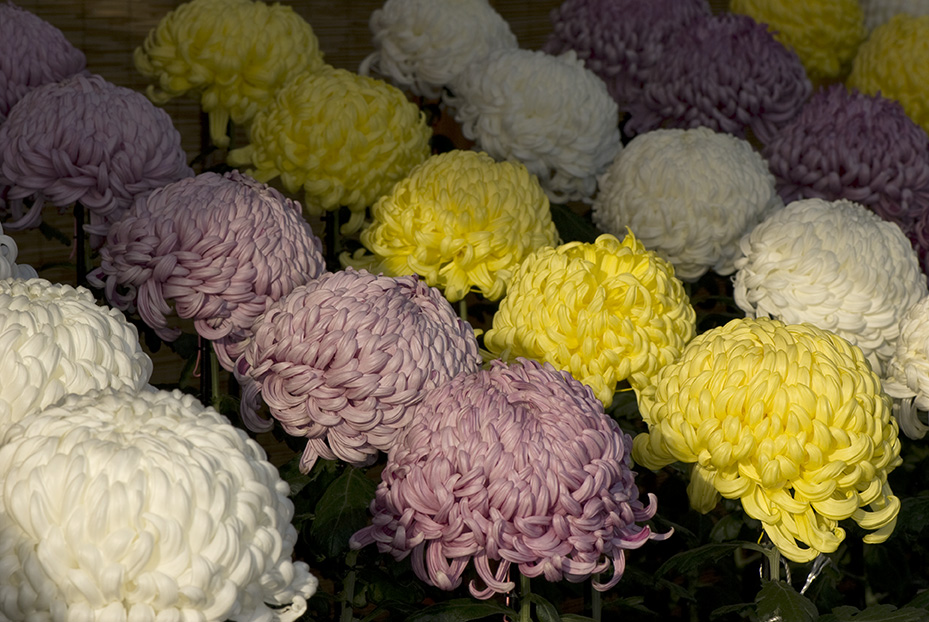
After more than a week of counting down the classes and styles of kiku, these beautiful flower displays are back in the Enid A. Haupt Conservatory as part of Fall Flowers of Japan.
Come visit these extraordinary flowers, just 20-minutes from Grand Central to Botanical Garden station on Metro North‘s Harlem Line. While you’re here, you should also visit the sublimely beautiful Peggy Rockefeller Rose Garden, indulge in a delicious lunch at the Garden Cafe, wander along the Bronx River in New York City’s largest remaining plot of old-growth forest; the 50-acre Thain Family Forest, and marvel at the beautiful fall light as it plays off the Garden’s 250-acres. The Garden is never the same two days in a row, so come spend a day in one of the world’s greatest urban gardens, The New York Botanical Garden!
How do they do that? Learn how our horticulturists train the Ogiku kiku below.
Posted in Behind the Scenes, Exhibitions on October 4 2011, by Ann Rafalko
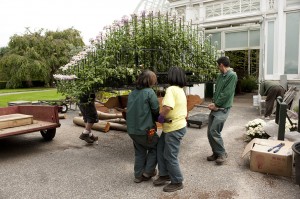 How do you move a plant with a ‘thousand blooms’? Very, very carefully.
How do you move a plant with a ‘thousand blooms’? Very, very carefully.
After months of attention, care, and careful training, this beautiful ozukuri, or ‘thousand bloom’ kiku is moved from the Nolen Greenhouses, to the Enid A. Haupt Conservatory to become part of Fall Flowers of Japan.
Posted in Gardening Tips on October 4 2011, by Sonia Uyterhoeven
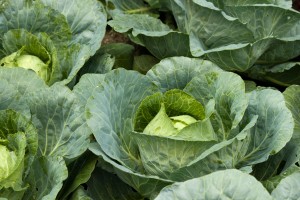 We have all heard that ‘cabbage is king’ although I doubt many of us know why.
We have all heard that ‘cabbage is king’ although I doubt many of us know why.
It is certainly a stately vegetable, its elegant heads outshine all other vegetables in an ornamental vegetable garden. And in past centuries, it was a staple in many diets; it stores well and can easily feed a large family. It also had a reputation for ‘medicinal’ properties. Cabbage is high in vitamin C and fiber, has anti-inflammatory and anti-bacterial properties and historically was used as a cure for ulcers and cancer. But are these reasons for such a regal appellation?
I read on the news recently that a retired dentist, Steve Hubacek, won first place in the Alaska State Fair for the largest cabbage. His entry weighed 126 pounds and measured four feet tall and seven feet across. This year’s entry was just shy of the Guinness World Record, already held by Huacek, of 127 pounds.
I have no idea what you would do with all that cabbage, or if the mammoth beast would even taste good (World Record-holding pumpkins certainly do not). I like sauerkraut but that’s a lot of sauerkraut even if you stretch it out over six months (which is generally the length of time that you can keep homemade sauerkraut).
Even if you’re not planning to compete at the State Fair, you should still consider growing cabbage in your own garden.
Posted in Behind the Scenes, Exhibitions on October 4 2011, by Ann Rafalko
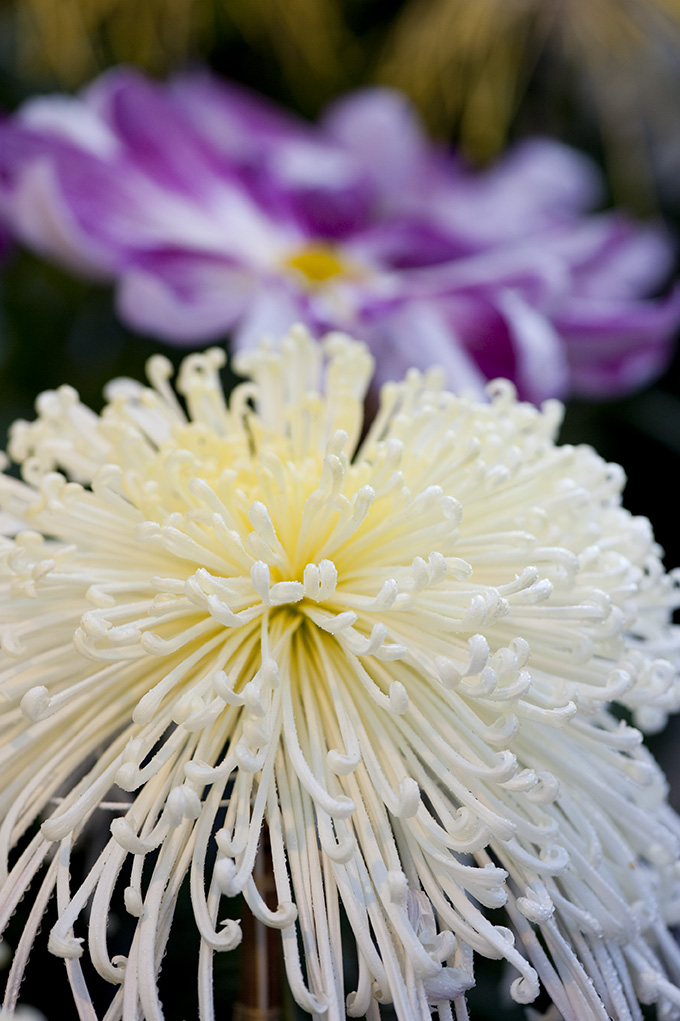
Tomorrow, Wednesday, October 5, the mesmerizing art of kiku returns to the Enid A. Haupt Conservatory as part of Fall Flowers of Japan. These Japanese chrysanthemums, trained into a dizzying array of styles and displays, are not to be missed. In anticipation, we’re taking an in-depth look at these fascinating flowers.
Learn all about the beautiful Spider, Brush and Thistle, and Unusual chrysanthemums below.